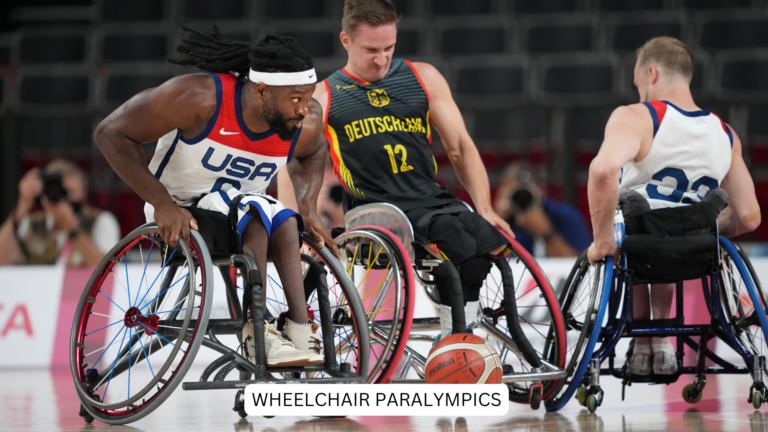As breakdancing, or “breaking,” makes its debut at the 2024 Paris Olympics, the world will witness a unique blend of athleticism and artistry competing on a global stage. While the Olympics have long been associated with objective scoring systems based on measurable metrics, breaking introduces an element of subjectivity that challenges traditional notions of sports judging. This article explores how judging breaking at the Olympics transcends pure science, delving into the nuanced artistry that defines the sport and the challenges that come with evaluating it.
Table of Contents
The Essence of Breaking
Breaking, originating from the streets of New York City in the 1970s, has grown from a niche subculture into a global phenomenon. At its core, breaking is a dance style that combines intricate footwork, acrobatic moves, and personal expression. Unlike many Olympic sports where points are awarded based on objective criteria like speed, height, or distance, breaking is judged on a blend of technical skill, creativity, and performance style. This fusion of elements makes breaking both a sport and an art form, a distinction that complicates the judging process.
The Olympic Judging System for Breaking
To judge breaking at the Olympics, a panel of experts will use a system that attempts to balance objectivity and subjectivity. The judging criteria are divided into several categories:
- Technique: This involves assessing the technical execution of moves, including precision, control, and form. Judges will look at how well a breaker performs foundational moves like top rocks, power moves, and freezes.
- Creativity: Breakers are encouraged to innovate and bring something new to the dance floor. Creativity involves the originality of the moves, the ability to surprise the audience, and the unique interpretation of the music.
- Musicality: A crucial aspect of breaking is how well the dancer interprets and interacts with the music. Judges will evaluate how the dancer’s movements align with the rhythm, beats, and mood of the soundtrack.
- Performance: This encompasses the overall presence, energy, and personality that the breaker brings to the performance. It’s about how they engage the audience and judges, creating a memorable and impactful performance.
- Battle Attitude: In breaking, battles between dancers are a central component. The attitude, confidence, and competitive spirit displayed during these one-on-one face-offs are critical to the overall performance.
The Subjectivity of Art in Sports
The inclusion of breaking in the Olympics brings to the forefront the inherent subjectivity in judging art-based sports. Unlike timed races or measured jumps, breaking’s evaluation relies heavily on the judges’ interpretation of style, flair, and creativity. This subjectivity can lead to differing opinions on what constitutes the “best” performance, making it challenging to maintain consistency in scoring.
For instance, a judge with a background in traditional breaking might prioritize technical execution and adherence to foundational moves, while another judge might place more weight on innovation and risk-taking. These differing perspectives can result in varying scores for the same performance, highlighting the subjective nature of the sport.
Challenges and Controversies
The subjective element of judging breaking is likely to spark debate and controversy, especially as the sport makes its Olympic debut. Dancers and fans alike may question the fairness of certain scores, particularly in close battles where the differences between competitors are minimal. The possibility of bias, whether conscious or unconscious, also looms large. Judges may favor certain styles, backgrounds, or even nationalities, further complicating the scoring process.
Moreover, the global nature of the Olympics means that judges must evaluate performances from dancers with diverse styles and interpretations of breaking. What is considered exceptional in one country might not be as highly regarded in another, leading to potential discrepancies in judging.
The Role of Technology in Judging
To address some of the challenges associated with judging breaking, technology may play a role in providing a more objective framework. High-definition video analysis, slow-motion replays, and motion-capture technology could help judges assess technical precision and movement execution more accurately. However, these tools are unlikely to replace the need for human judgment when it comes to evaluating the artistic and creative aspects of breaking.
Embracing the Subjectivity
While subjectivity in judging breaking poses challenges, it is also what makes the sport so captivating. The diversity of styles, the creativity of the dancers, and the interpretation of music all contribute to the uniqueness of each performance. This artistic element is what draws audiences to breaking, and it is what will make the Olympic competition so compelling.
Rather than viewing subjectivity as a flaw, it can be embraced as a feature that highlights the individuality of each breaker. The key to successful judging in breaking will be transparency, consistency, and a recognition of the art form’s inherent complexity. Judging breaking is not just about scoring athletic performance; it’s about appreciating the art, culture, and expression that define the dance. The intersection of art and science in the judging process will undoubtedly lead to lively discussions and debates, but it is this very complexity that makes breaking a worthy addition to the Olympic roster. As we watch these dancers compete, we’ll be reminded that in breaking, as in life, there is beauty in the balance between precision and creativity, structure and spontaneity, science and art.








